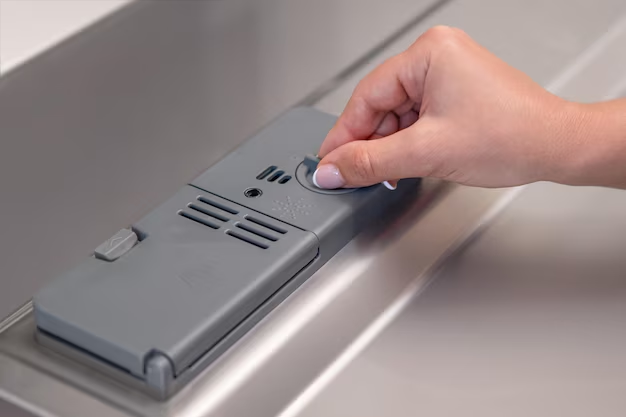Understanding How Much Power Your Refrigerator Uses Annually
It's often said that knowledge is power, especially when it comes to understanding the energy consumption of your home appliances. Among these, the refrigerator stands out as a significant consumer of electricity, primarily because it operates continuously throughout the year. You've probably wondered, "Just how many kilowatt-hours per year does a refrigerator use?" Let's delve into this topic, explore various factors affecting consumption, and provide practical tips on how to manage this essential aspect of home energy usage.
How Refrigerators Consume Energy
Refrigerators are a fundamental part of modern living, providing a convenient way to store food safely. However, this convenience comes at the cost of energy consumption due to their constant operation. Fundamentally, a refrigerator consumes electricity to power its compressor, the component responsible for cooling.
Key Factors Influencing Energy Consumption
Several factors affect how much energy a refrigerator uses:
- Size: Generally, larger refrigerators consume more energy simply because there is more space to cool. However, newer models tend to be more energy-efficient than older, smaller ones.
- Age and Model: Modern refrigerators are designed to be more energy-efficient than older models due to advances in technology and stricter energy standards.
- Location: Placement can impact their efficiency. Refrigerators exposed to direct sunlight or placed near heat-producing appliances may work harder to maintain cool temperatures.
- Temperature Settings: Setting the thermostat too low can unnecessarily increase energy usage.
- Door Openings: Frequently opening the door lets cold air escape, causing the compressor to use more energy to cool down the interior again.
Calculating the Annual Energy Use of a Refrigerator
To estimate how many kilowatt-hours (kWh) a refrigerator uses annually, you can refer to its EnergyGuide label – a default requirement for appliances in many places. This label provides an estimation based on average usage.
Basic Calculation Approach
- Check the Label: Find the annual energy consumption on the EnergyGuide label, usually stated in kWh.
- Understand the Model: Remember, this estimation assumes average conditions. Actual consumption may differ based on your specific conditions and usage patterns.
Example Calculation
If a refrigerator label states it consumes approximately 500 kWh/year, and electricity costs $0.12 per kWh, the annual energy cost would be: [ 500 , ext{kWh/year} imes $0.12/ ext{kWh} = $60/ ext{year} ]
Enhancing Refrigerator Efficiency
Understanding usage is just the first step. Optimizing the efficiency of your refrigerator can lead to considerable energy savings over time. Here are some actionable tips:
Optimize Temperature Settings
- Recommended Settings: Refrigerators work efficiently around 37°F (3°C), while freezers function best at 0°F (-18°C).
- Avoid Extreme Cold: Setting temperatures lower than necessary not only consumes more energy but can also spoil your food.
Strategic Placement
- Avoid Heat Sources: Keep the refrigerator away from direct sunlight and heat-emitting appliances.
- Ensure Ventilation: Refrigerators need space for heat to dissipate. Ensure adequate space between the back of the unit and the wall.
Maintenance and Habits
- Clean Coils: Dusty condenser coils require the compressor to work harder. Cleaning them regularly can improve efficiency.
- Seal Check: Inspect door seals to ensure they are tight and not allowing cool air to escape.
- Organize Contents: An organized fridge minimizes the time you spend with the door open searching for items.
Exploring the Varieties: Different Types of Refrigerators
Understanding the type of refrigerator you own is also key to estimating and optimizing its energy use. Here, we explore common types you might encounter:
Top-Freezer Models
These are standard and often more energy-efficient due to their straightforward design. They typically have a slightly lower energy consumption compared to more complex models.
Bottom-Freezer Models
These offer more convenience by placing fresh food at eye level. These might consume slightly more energy due to the ergonomics and design.
Side-by-Side Models
They often have more features, like ice and water dispensers, which can increase energy use. Furthermore, the narrow compartments may lead to less efficient organization, keeping the door open longer.
French-Door Models
These are stylish but may consume more energy due to more sophisticated designs and larger volumes for ice makers and dispensers.
Understanding Energy Efficiency Ratings
When evaluating refrigerators, there’s more to consider than just the listed annual energy usage. Appliance efficiency ratings provide additional insight.
EnergyStar Certification
EnergyStar-certified appliances meet or exceed energy efficiency specifications, often using 10-15% less energy than standard models.
Energy Usage Rating Labels
Energy labels often provide a scale or rating. Aim for models closer to the top of these scales for the best efficiency relative to size and capacity.
Practical Summary: Key Takeaways for Managing Refrigerator Energy Use
Here’s a handy list of actionable strategies to enhance refrigerator efficiency and manage your energy bills:
- 🔍 Watch Your Settings: Keep your fridge at about 37°F (3°C) and freezer at 0°F (-18°C).
- ☀️ Avoid Heat: Locate your fridge away from direct sunlight and heat sources.
- 🔧 Regular Maintenance: Keep coils clean and seals in good condition.
- 🚪 Quick Access: Organize contents efficiently to reduce door opening times.
- 🏷️ Energy Labels: Look for EnergyStar certification for optimal efficiency.
- ✨ Upgrade Wisely: Consider upgrading to a more energy-efficient model if your current fridge is over a decade old.
Concluding Insights
While refrigerators are a vital component of any household, they are one of the leading consumers of home energy. Understanding the factors that impact their energy use can lead to more informed choices and potential savings. By optimizing settings and maintenance practices, and considering energy-efficient models, you can significantly reduce the yearly kilowatt-hour usage of your refrigerator. In turn, this responsible consumption not only benefits your wallet but also contributes to broader environmental efforts.
